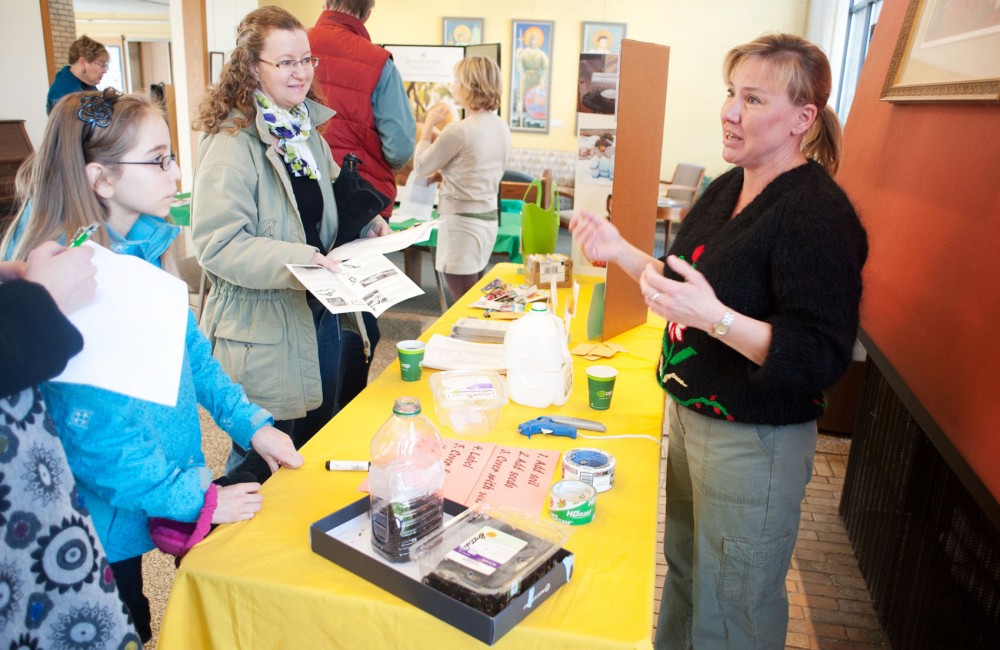Minneapolis residents came together in a Dinkytown church last weekend to learn how to prep seeds for the growing season.
The program is one way local organizations are teaching community members about gardening in an attempt to reduce barriers in growing local produce.
Their goal is to be a resource for gardeners and provide more opportunities for community members who don’t have access to proper gardening space.
The nonprofit organization Gardening Matters is partnering up with the Southeast Como Improvement Association and East Side Neighborhood Services in order to create a network of local food resource hubs — a “coalition of organizations that are trying to reduce the barriers to growing your own food,” said SECIA community garden organizer Stephanie Hankerson.
Hankerson said locally grown produce is better than retail produce because it doesn’t have to be transported from far away and waste fuel. It can also be free of pesticides.
Price and available space can inhibit some from growing their own food.
Hankerson said it’s difficult for tenants to convince landlords to rip up their yard for a garden. About 64 percent of houses in Southeast Como were renter-occupied in 2000, according to Minneapolis data. Numbers from the 2010 U.S. Census are not yet available.
Ruth Styles, a University of Minnesota geography major, said she got involved with the program because she feels that giving people access to local, healthy food is a good way to help the community.
She said these programs are important for people who do not have their own space to grow produce so they can network with neighbors and become members of community gardens.
“Students move a lot, so it’s hard to be invested in one place,” she said. “So having a place for people that come and go is very valuable.”
Lina Rodriguez, the local food resource hub coordinator with Gardening Matters, said membership in the organization can give gardeners access to discounted seeds and equipment.
Because the hubs can buy in bulk, they can provide resources for the community for less than what it would normally cost.
Last year, the program sold 15,000 seedlings and 14,000 seed packets to its members.
Hankerson said gardening is usually in the back of people’s minds in February, but those interested should sign up because the available spots will fill up fast.
The hub offered 600 memberships last year, but this year the number of memberships doubled due to demand.
The increase in members will also be a way to help fund the program since city funding will be running out at the end of the month — funding was cut due to budget pressures. Rodriguez said she expects city staff to still participate in their meetings.
The organization is planning on sustaining itself financially through membership fees, funding grants and a mentorship program.
Instead of paying for instructors, the organization pair up new members with more experienced ones. While Gardening Matters’ main goal isn’t to teach, the mentors can help show new gardeners the ropes.
Gardening Matters reached out to SECIA because of their close relationship with the community.
Hankerson said SECIA decided to get involved because they feel that community gardens are a good way to bring the neighborhood together.
If people aren’t interested in participating in a community garden, the hubs can be a good resource for neighbors to share land.
Some residents are not allowed to garden in certain areas because of poor soil conditions. In order to accommodate resident needs, the hub provides a way to network with neighbors and share gardening space.
Currently there are four hubs in Minneapolis and one in St. Paul. The city of Minneapolis also has about 300 registered gardens in the Gardening Matters database.

















